Thien Van Luong
BERT-VBD: Vietnamese Multi-Document Summarization Framework
Sep 18, 2024Abstract:In tackling the challenge of Multi-Document Summarization (MDS), numerous methods have been proposed, spanning both extractive and abstractive summarization techniques. However, each approach has its own limitations, making it less effective to rely solely on either one. An emerging and promising strategy involves a synergistic fusion of extractive and abstractive summarization methods. Despite the plethora of studies in this domain, research on the combined methodology remains scarce, particularly in the context of Vietnamese language processing. This paper presents a novel Vietnamese MDS framework leveraging a two-component pipeline architecture that integrates extractive and abstractive techniques. The first component employs an extractive approach to identify key sentences within each document. This is achieved by a modification of the pre-trained BERT network, which derives semantically meaningful phrase embeddings using siamese and triplet network structures. The second component utilizes the VBD-LLaMA2-7B-50b model for abstractive summarization, ultimately generating the final summary document. Our proposed framework demonstrates a positive performance, attaining ROUGE-2 scores of 39.6% on the VN-MDS dataset and outperforming the state-of-the-art baselines.
Transformer-Based Deep Learning Detector for Dual-Mode Index Modulation 3D-OFDM
Sep 09, 2023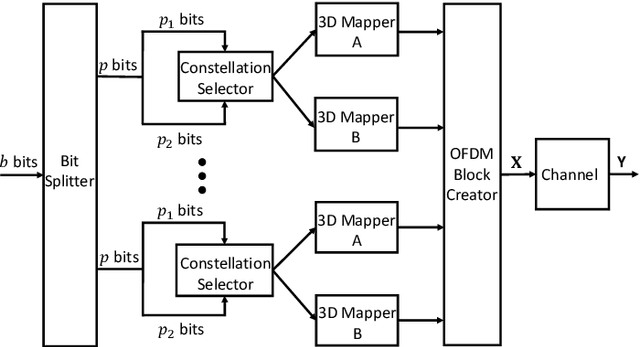
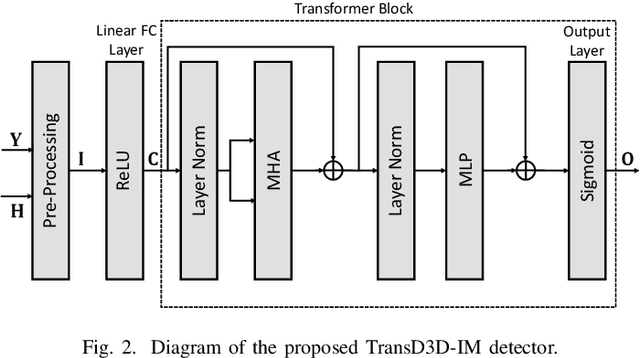
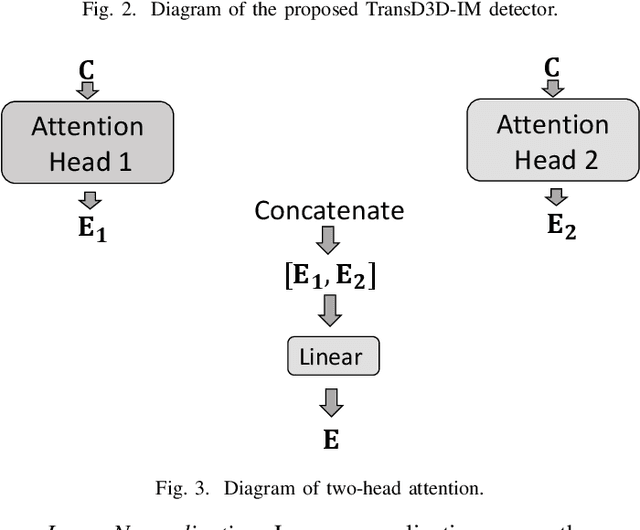
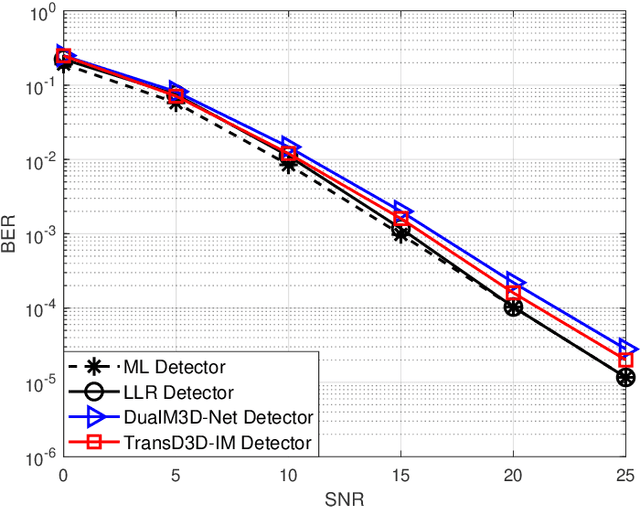
Abstract:In this paper, we propose a deep learning-based signal detector called TransD3D-IM, which employs the Transformer framework for signal detection in the Dual-mode index modulation-aided three-dimensional (3D) orthogonal frequency division multiplexing (DM-IM-3D-OFDM) system. In this system, the data bits are conveyed using dual-mode 3D constellation symbols and active subcarrier indices. As a result, this method exhibits significantly higher transmission reliability than current IM-based models with traditional maximum likelihood (ML) detection. Nevertheless, the ML detector suffers from high computational complexity, particularly when the parameters of the system are large. Even the complexity of the Log-Likelihood Ratio algorithm, known as a low-complexity detector for signal detection in the DM-IM-3D-OFDM system, is also not impressive enough. To overcome this limitation, our proposal applies a deep neural network at the receiver, utilizing the Transformer framework for signal detection of DM-IM-3D-OFDM system in Rayleigh fading channel. Simulation results demonstrate that our detector attains to approach performance compared to the model-based receiver. Furthermore, TransD3D-IM exhibits more robustness than the existing deep learning-based detector while considerably reducing runtime complexity in comparison with the benchmarks.
After-Fatigue Condition: A Novel Analysis Based on Surface EMG Signals
Sep 09, 2023



Abstract:This study introduces a novel muscle activation analysis based on surface electromyography (sEMG) signals to assess the muscle's after-fatigue condition. Previous studies have mainly focused on the before-fatigue and fatigue conditions. However, a comprehensive analysis of the after-fatigue condition has been overlooked. The proposed method analyzes muscle fatigue indicators at various maximal voluntary contraction (MVC) levels to compare the before-fatigue, fatigue, and after-fatigue conditions using amplitude-based, spectral-based, and muscle fiber conduction velocity (CV) parameters. In addition, the contraction time of each MVC level is also analyzed with the same indicators. The results show that in the after-fatigue condition, the muscle activation changes significantly in the ways such as higher CV, power spectral density shifting to the right, and longer contraction time until exhaustion compared to the before-fatigue and fatigue conditions. The results can provide a comprehensive and objective evaluation of muscle fatigue and recovery, which can be helpful in clinical diagnosis, rehabilitation, and sports performance.
Machine Learning-Based Intrusion Detection: Feature Selection versus Feature Extraction
Jul 04, 2023



Abstract:Internet of things (IoT) has been playing an important role in many sectors, such as smart cities, smart agriculture, smart healthcare, and smart manufacturing. However, IoT devices are highly vulnerable to cyber-attacks, which may result in security breaches and data leakages. To effectively prevent these attacks, a variety of machine learning-based network intrusion detection methods for IoT networks have been developed, which often rely on either feature extraction or feature selection techniques for reducing the dimension of input data before being fed into machine learning models. This aims to make the detection complexity low enough for real-time operations, which is particularly vital in any intrusion detection systems. This paper provides a comprehensive comparison between these two feature reduction methods of intrusion detection in terms of various performance metrics, namely, precision rate, recall rate, detection accuracy, as well as runtime complexity, in the presence of the modern UNSW-NB15 dataset as well as both binary and multiclass classification. For example, in general, the feature selection method not only provides better detection performance but also lower training and inference time compared to its feature extraction counterpart, especially when the number of reduced features K increases. However, the feature extraction method is much more reliable than its selection counterpart, particularly when K is very small, such as K = 4. Additionally, feature extraction is less sensitive to changing the number of reduced features K than feature selection, and this holds true for both binary and multiclass classifications. Based on this comparison, we provide a useful guideline for selecting a suitable intrusion detection type for each specific scenario, as detailed in Tab. 14 at the end of Section IV.
Deep Neural Network-Based Detector for Single-Carrier Index Modulation NOMA
Sep 20, 2022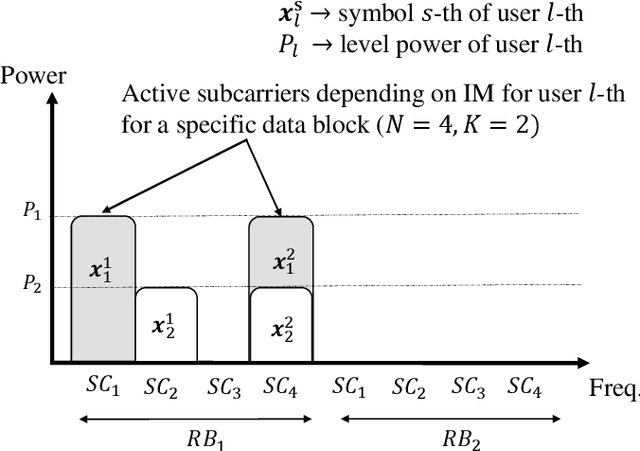

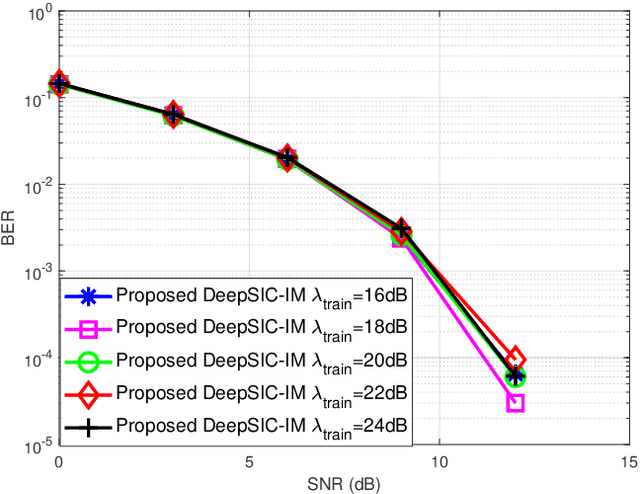
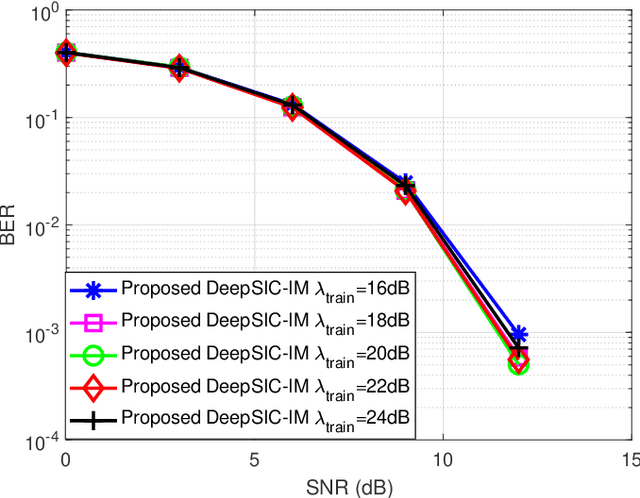
Abstract:In this paper, a deep neural network (DNN)-based detector for an uplink single-carrier index modulation nonorthogonal multiple access (SC-IM-NOMA) system is proposed, where SC-IM-NOMA allows users to use the same set of subcarriers for transmitting their data modulated by the sub-carrier index modulation technique. More particularly, users of SC-IMNOMA simultaneously transmit their SC-IM data at different power levels which are then exploited by their receivers to perform successive interference cancellation (SIC) multi-user detection. The existing detectors designed for SC-IM-NOMA, such as the joint maximum-likelihood (JML) detector and the maximum likelihood SIC-based (ML-SIC) detector, suffer from high computational complexity. To address this issue, we propose a DNN-based detector whose structure relies on the model-based SIC for jointly detecting both M-ary symbols and index bits of all users after trained with sufficient simulated data. The simulation results demonstrate that the proposed DNN-based detector attains near-optimal error performance and significantly reduced runtime complexity in comparison with the existing hand-crafted detectors.
Deep Learning-Based Signal Detection for Dual-Mode Index Modulation 3D-OFDM
Sep 20, 2022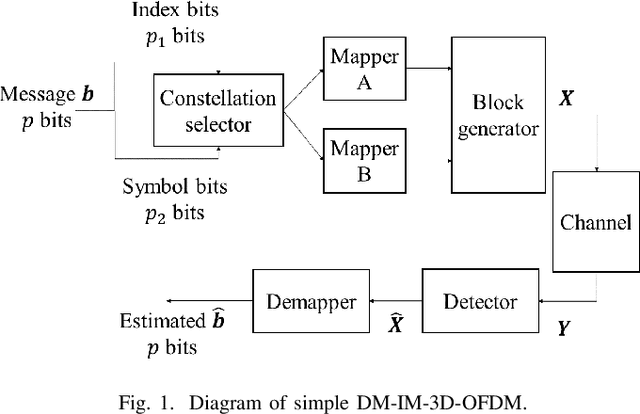
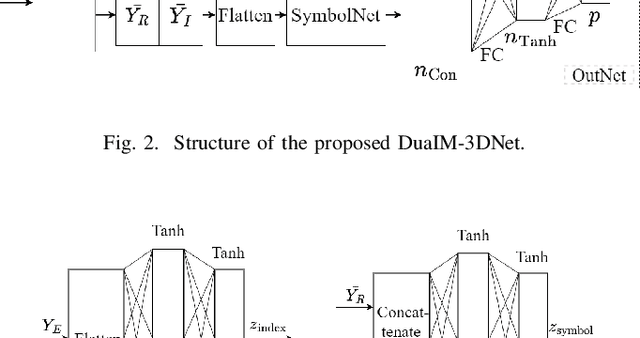
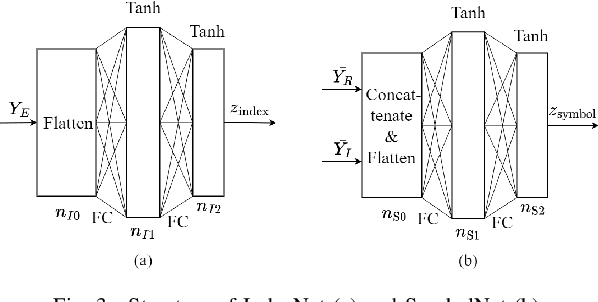
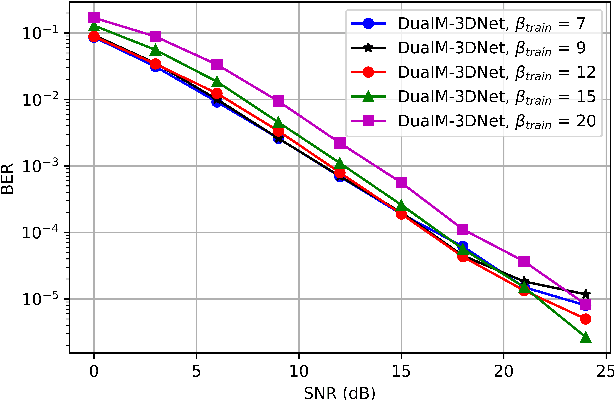
Abstract:In this paper, we propose a deep learning-based signal detector called DuaIM-3DNet for dual-mode index modulation-based three-dimensional (3D) orthogonal frequency division multiplexing (DM-IM-3D-OFDM). Herein, DM-IM-3D- OFDM is a subcarrier index modulation scheme which conveys data bits via both dual-mode 3D constellation symbols and indices of active subcarriers. Thus, this scheme obtains better error performance than the existing IM schemes when using the conventional maximum likelihood (ML) detector, which, however, suffers from high computational complexity, especially when the system parameters increase. In order to address this fundamental issue, we propose the usage of a deep neural network (DNN) at the receiver to jointly and reliably detect both symbols and index bits of DM-IM-3D-OFDM under Rayleigh fading channels in a data-driven manner. Simulation results demonstrate that our proposed DNN detector achieves near-optimal performance at significantly lower runtime complexity compared to the ML detector.
Deep Learning Based Successive Interference Cancellation for the Non-Orthogonal Downlink
Jul 29, 2022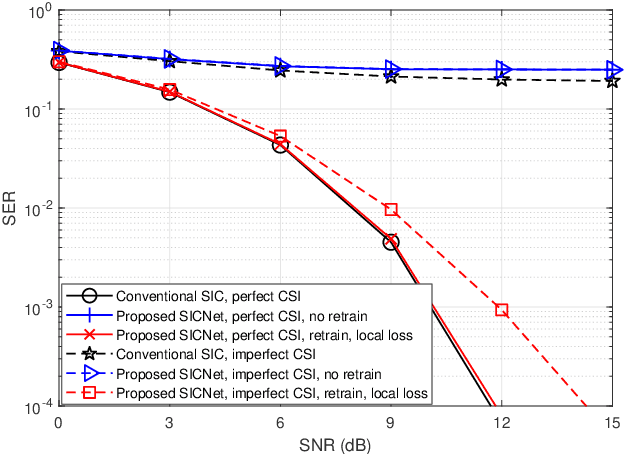
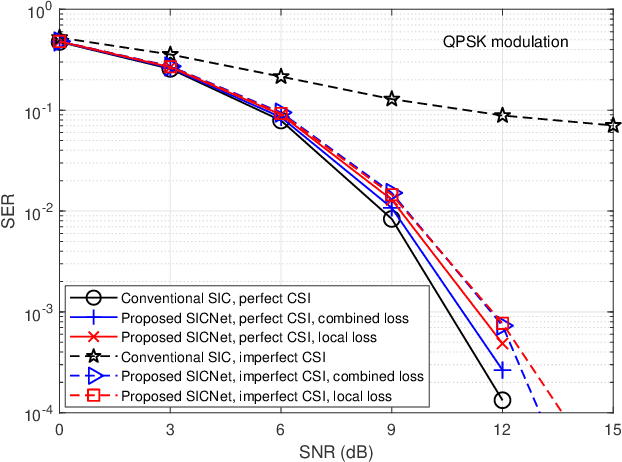
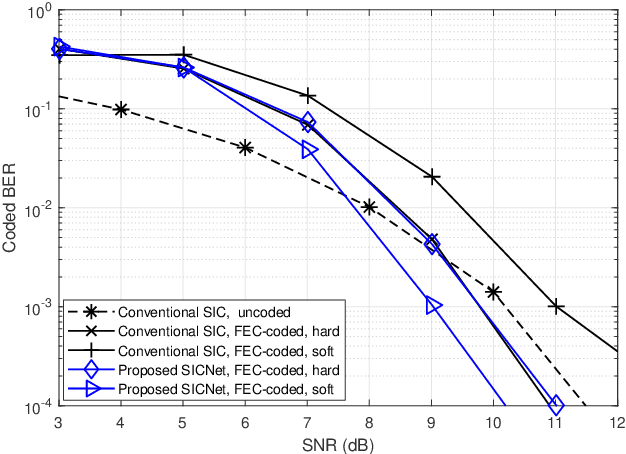
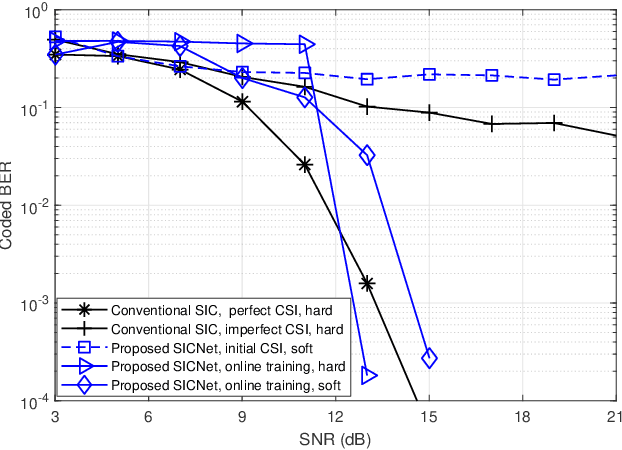
Abstract:Non-orthogonal communications are expected to play a key role in future wireless systems. In downlink transmissions, the data symbols are broadcast from a base station to different users, which are superimposed with different power to facilitate high-integrity detection using successive interference cancellation (SIC). However, SIC requires accurate knowledge of both the channel model and channel state information (CSI), which may be difficult to acquire. We propose a deep learningaided SIC detector termed SICNet, which replaces the interference cancellation blocks of SIC by deep neural networks (DNNs). Explicitly, SICNet jointly trains its internal DNN-aided blocks for inferring the soft information representing the interfering symbols in a data-driven fashion, rather than using hard-decision decoders as in classical SIC. As a result, SICNet reliably detects the superimposed symbols in the downlink of non-orthogonal systems without requiring any prior knowledge of the channel model, while being less sensitive to CSI uncertainty than its model-based counterpart. SICNet is also robust to changes in the number of users and to their power allocation. Furthermore, SICNet learns to produce accurate soft outputs, which facilitates improved soft-input error correction decoding compared to model-based SIC. Finally, we propose an online training method for SICNet under block fading, which exploits the channel decoding for accurately recovering online data labels for retraining, hence, allowing it to smoothly track the fading envelope without requiring dedicated pilots. Our numerical results show that SICNet approaches the performance of classical SIC under perfect CSI, while outperforming it under realistic CSI uncertainty.
Generalized BER of MCIK-OFDM with Imperfect CSI: Selection combining GD versus ML receivers
Jul 29, 2022
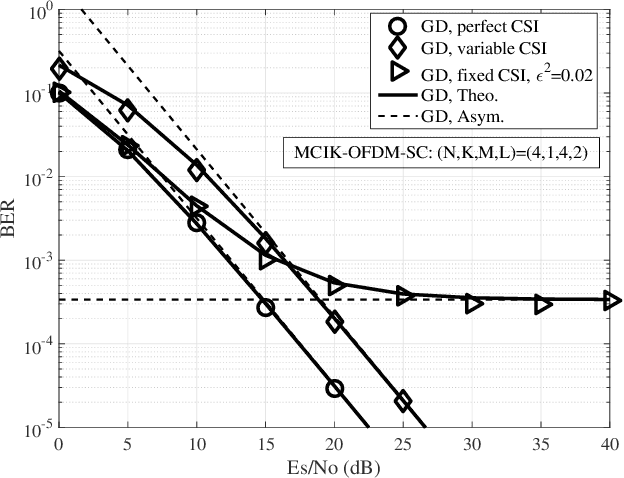
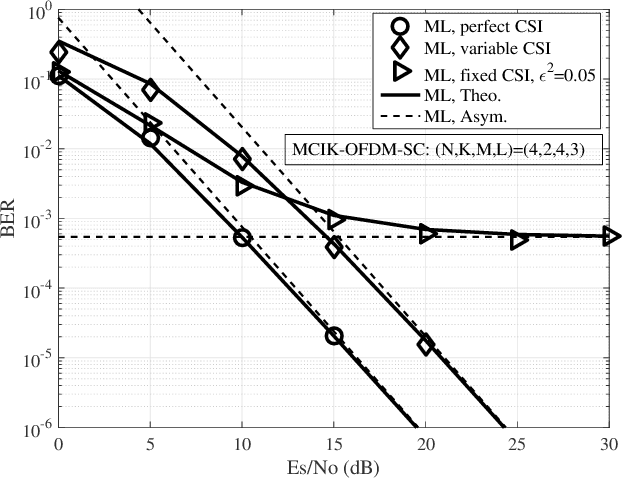
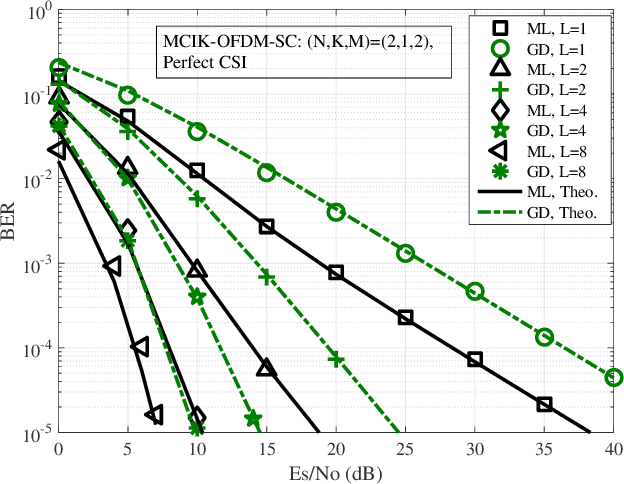
Abstract:This paper analyzes the bit error rate (BER) of multicarrier index keying - orthogonal frequency division multiplexing (MCIK-OFDM) with selection combining (SC) diversity reception. Particularly, we propose a generalized framework to derive the BER for both the low-complexity greedy detector (GD) and maximum likelihood (ML) detector. Based on this, closedform expressions for the BERs of MCIK-OFDM with the SC using either the ML or the GD are derived in presence of the channel state information (CSI) imperfection. The asymptotic analysis is presented to gain helpful insights into effects of different CSI conditions on the BERs of these two detectors. More importantly, we theoretically provide opportunities for using the GD instead of the ML under each specific CSI uncertainty, which depend on the number of receiver antennas and the M-ary modulation size. Finally, extensive simulation results are provided in order to validate our theoretical expressions and analysis.
Enhancing Diversity of OFDM with Joint Spread Spectrum and Subcarrier Index Modulations
Jul 29, 2022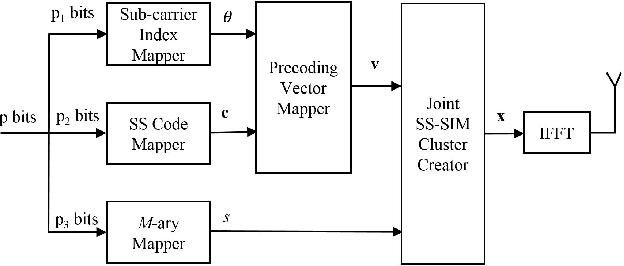


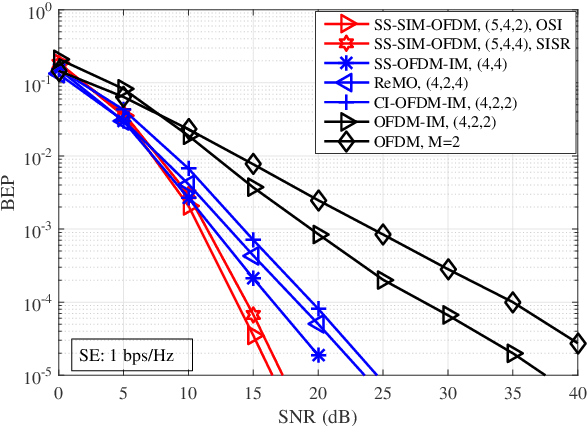
Abstract:This paper proposes a novel spread spectrum and sub-carrier index modulation (SS-SIM) scheme, which is integrated to orthogonal frequency division multiplexing (OFDM) framework to enhance the diversity over the conventional IM schemes. Particularly, the resulting scheme, called SS-SIMOFDM, jointly employs both spread spectrum and sub-carrier index modulations to form a precoding vector which is then used to spread an M-ary complex symbol across all active sub-carriers. As a result, the proposed scheme enables a novel transmission of three signal domains: SS and sub-carrier indices, and a single M-ary symbol. For practical implementations, two reduced-complexity near-optimal detectors are proposed, which have complexities less depending on the M-ary modulation size. Then, the bit error probability and its upper bound are analyzed to gain an insight into the diversity gain, which is shown to be strongly affected by the order of sub-carrier indices. Based on this observation, we propose two novel sub-carrier index mapping methods, which significantly increase the diversity gain of SSSIM-OFDM. Finally, simulation results show that our scheme achieves better error performance than the benchmarks at the cost of lower spectral efficiency compared to classical OFDM and OFDM-IM, which can carry multiple M-ary symbols.
 Add to Chrome
Add to Chrome Add to Firefox
Add to Firefox Add to Edge
Add to Edge